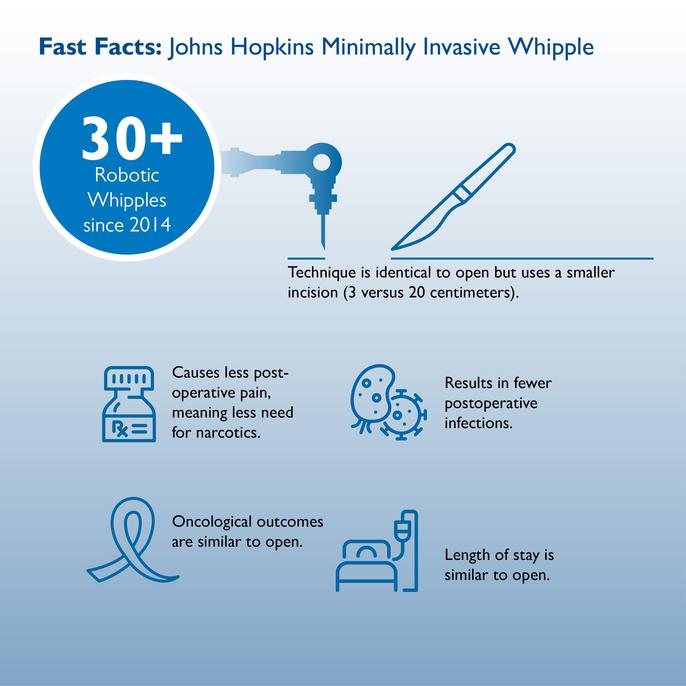The type of operation performed for removal of pancreatic cancer is based on the location of the tumor. John Cameron right performs his 2000th Whipple surgery a life-saving treatment for pancreatic cancer.
Https Www Hopkinsmedicine Org Surgery Images Pdf Whipple Procedure Infographic Pdf
Today the mortality rate is less than 1 percentthanks to the efforts of pancreatic surgeon John Cameron who drastically refined the procedure.

Johns hopkins whipple surgery. Our surgeons perform more pancreas cancer surgeries than any other institution in the world. Scientists at Johns Hopkins are making advances in understanding the early stages of this disease and it is our hope that in the future more cases will be detected earlier when they are still operable. For tumors of the head and neck of the pancreas a Wh.
As the least common pancreatic cancer surgery this procedure is used when tumors extend throughout the pancreas. Cameron Division of Hepatobiliary and Pancreatic Surgery The Johns Hopkins Hospital Baltimore MD Department of Oncology The Johns Hopkins Hospital Baltimore MD Department of Pathology The Johns Hopkins Hospital Baltimore MD. Wolfgang MD PhD Baltimore MD.
Surgeons at The Johns Hopkins Hospital have performed more than 5000 Whipples since 1980. This distribution results from the need to perform the classic Whipple based on the operative findings and underscores the importance of having an experienced pancreatic surgeon. Describes open and newer minimally invasive surgical options for the Whipple procedure the primary surgery.
At Johns Hopkins approximately two-thirds of the Whipple Operations are the Pylorus Preserving or Mini-Whipple variation and the remaining one third are the Classic Whipple. John Cameron and todays surgeons continue the tradition of excellence today. The authors report no conflicts of interest.
In a total pancreatectomy surgeons remove the entire pancreas spleen gallbladder common bile duct and portions of the small intestine and stomach. He has worked to lower that to 1 percent to 2 percent at Johns Hopkins. Surgeons at Johns Hopkins have performed over 5000 Whipple resections more than any other institution in the world.
John Cameron performed his 2000th Whipple surgery on March 30th 2012. Johns Hopkins surgeon Christopher Wolfgang MD. The Whipple procedure was perfected at Johns Hopkins by Dr.
Whipple surgery Johns Hopkins Medicine surgeon Dr. Surgeons at The Johns Hopkins Hospital have performed more than 5000 Whipples since 1980. Robotic Whipple Procedure Case Study Jin He MD PhD Assistant Professor of Surgery at Johns Hopkins discusses using the robotic Whipple surgical procedure for a patient presenting with intraductal papillary mucinous neoplasm IPMN with high-grade dysplasia.
The Whipple procedure also known as a pancreaticoduodenectomy is a surgical trea. HttpsgooglAAK1UtWhipples Procedure Pancreaticoduodenectomy by Dr Majid Ahmed TalikotiThe Whipple procedure is a major type of surgery done to excise t. At the beginning of his career the mortality rate from the Whipple procedure was nearly 30 percent.
He has operated on more patients with pancreatic cancer and done more Whipple resections than any other surgeon in the world. Most patients will be in the hospital for one to two weeks following the procedure. A number of studies have shown that surgical volume the number of pancreatic resections a center performs each year is a strong predictor of patient outcome.
Generally if the cancer is localized surgical treatment resection or removal of the tumor can be pursued. The John L. This experience makes a difference.
Today the mortality rate is less than 1 percentthanks to the efforts of pancreatic surgeon John Cameron who drastically refined the procedure. When is surgery possible. Their combined experience and expertise makes them the foremost pancreatic surgical team.
